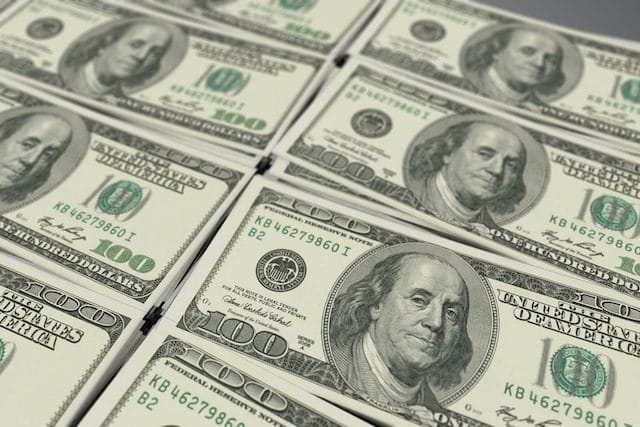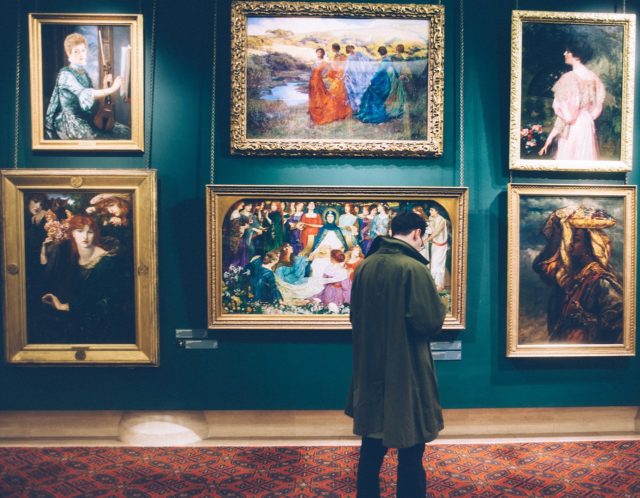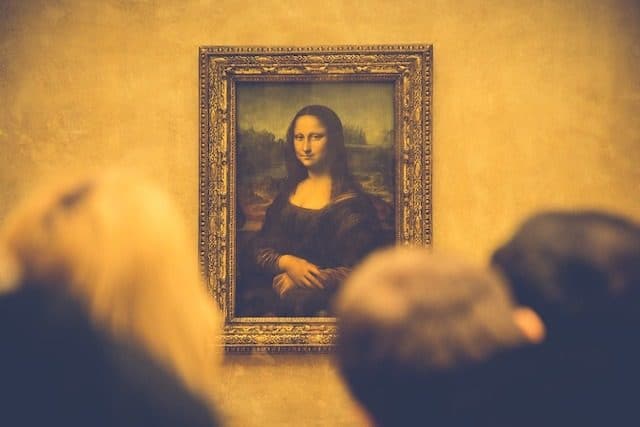As they say, it takes a lot of intelligence to be a confident person. To be able to look a person in the eye, lie to them, and cheat them out of their time, money, and trust is not something that just anyone can do. And when a scammer can do that to multiple people for huge amounts of money, based on the most blatant lies, well, that’s another thing entirely. And yet, people still do it. Sometimes these scams get so big and so out of control that they’re almost unbelievable. Almost…
10. Frederic Bourdin pretended to be children
Frederic Bourdin left a trail of con artists in Europe and the United States. When he was 31, he managed to convince school officials and students that he was an abused 15-year-old orphan for a month while he attended classes and made friends. He traveled from country to country, most often posing as a teenage boy.
More mysterious than the scam itself is the fact that Bourdain didn't seem to be doing it for any reason. He was getting money from people; he wasn't preying on other kids around him. It was just a scam for the sake of a scam. He's said of himself that he's a manipulator, and he even has a tattoo on his arm that says, The Chameleon of Nantes ", which is the name of the town where he grew up.
His scam in Spain, where he played an orphan, only ended when a school official accidentally saw a TV show O Bourdin and recognized his face.
A few years earlier, when he was 23, Bourdin successfully posed as someone's missing 16-year-old son, despite having mismatched eyes and a French accent. He lived with the missing boy's parents for several months before a DNA test forced on him by the FBI (who feared he was a spy) exposed his scam.
9. First International Bank of Grenada

No matter how much money you try to swindle from another person, you're still just a human being taking money from other humans, and that's always an uphill battle. Van Brink realized this, so he decided to swindle even bigger. And what's bigger than a human being, but still able to make money? A bank. So he created a bank.
In 1997, Brink acquired a license to open his own bank in Grenada. He convinced the government of the country where he had just received citizenship that he was legitimate by claiming that he owned giant ruby with photographs and an estimated value of $20 million. To be clear, the ruby existed, but it was not his. Regardless, and with another $26 billion in asset guarantees, the bank was formed, and within a year they had transferred $14 billion in assets.
In truth, the bank managed to lure investors 170 million dollars . The bank, of course, claimed to have insurance, but it was issued by another shell company. Investors were promised high interest rates, but in reality, Brink and his partners were simply buying luxury goods and using the new investors' investments to pay fictitious interest to the old investors until the scam collapsed.
Brink fled to Uganda, all the while denying wrongdoing. He was eventually charged, but died of a heart attack while awaiting trial.
8. Victor Lustig sold the Eiffel Tower twice

A good con man must be able to gain people's trust. A great con man can gain their faith. That is, they can make you believe the impossible. Like how Victor Lustig somehow convinced people that he not only owned the Eiffel Tower, but was willing to sell it to them. And he did it twice.
In 1925, the French government was complaining about the poor condition of the Eiffel Tower, and apparently an official made an offhand remark in a newspaper about selling it for scrap metal Lustig read this and took action.
He made up fake forms that listed him as a government official and invited locals scrap metal dealers to meet him. He told the dealers that the tower, which was never intended to be a permanent residence, was being torn down and the highest bidder for 7,000 tons of scrap metal could have it all. He assured his favorite dealer target that if they greased the wheels, the contract would be theirs.
With the bribe in hand, Lustig left the country and waited for news of the fraud being solved. It never happened, probably due to his victim's embarrassment preventing them from coming forward. So Lustig did what any successful con man would do: he returned to France and pulled the same scam a second time with new victims.
When he escaped this time, his victim reported the crime, but Lustig was already in the United States.
7. Arthur Ferguson sold landmarks in England and America

It turns out that 1925 was a rich year for attractions, because while Victor Lustig was selling the Eiffel Tower in France, Scotsman Arthur Ferguson managed to sell Nelson's Column, Big Ben and Buckingham Palace to American tourists visiting London He later moved to the United States and sold the White House to a Texas rancher and the Statue of Liberty to an Australian.
Naturally, you wonder how anyone could believe these things were for sale, but Ferguson was very persuasive. In England, he explained that after the First World War, the government was in dire need of new money. He realized that Americans were less familiar with the intricacies of how things worked, so they would be easier to spot. And they were.
He never sold the attractions directly. Instead, he took deposits A few thousand dollars here or there was all he needed. Especially when he could repeat the scam over and over again, selling the same buildings to different people.
Most victims were too embarrassed to report it to the police, allowing Ferguson to continue his scam. It was only when an Australian looking to buy the Statue of Liberty took too long to receive the funds and became suspicious of Ferguson's impatience that he was finally caught.
6. Mary Bateman's Prophetic Chicken

Harry Houdini famously pursued con artists who preyed on the faith and beliefs of certain victims, claiming they could speak to the dead or the divine. Some of these con artists simply pretend to be speaking from the outside, but Mary Bateman tried to take it to another level by offering what initially seemed like irrefutable proof. She had a hen that laid eggs with messages from God. Not bad, huh?
In 1806, Mary claimed that one of her hens laid an egg , with the words "Christ is Coming" clearly written on the shell. Despite the typo, it was astonishing. Especially for a woman whose claim to fame up to that point had been a string of poorly planned robberies in which she was caught every time.
Word soon spread and people flocked to her farm, where they paid a penny apiece to see the miracle chicken and her eggs. She also offered people official seals to ensure they made it to the right side of Rapture, which were apparently just pieces of paper with "JC" written on them.
The suspicious visitor soon realized the fraud when he exposed Bateman for using simple chemistry and a somewhat gruesome determination to perform her miracles. She took eggs and wrote her message on them. with vinegar, which weakened the shell enough for the letters to be visible. She then stuffed the eggs back into the hen, causing her to lay them a second time in front of witnesses. The stranger simply hid outside her barn early one morning and watched her do it.
5. Joseph Pruszynowski was called the Hasidic Robin Hood

Is there such a thing as a good con artist? If so, Joseph Pruszynowski certainly counts. He committed various frauds over a 20-year period despite being a Hasidic rabbi, which most people would think would prohibit him from such crimes.
Over the years, Pruszynowski has carried out numerous scams that have brought him millions of dollars He managed to wait until the statute of limitations expired on many, but others were still following him when he was finally arrested in 1998. That's partly why he was able to evade capture for so long — long enough to be featured on an episode of Unsolved Mysteries. . — was the help he got. You see, he didn't keep the money he stole; he distributed it to the Orthodox Jewish communities, and they defended him for it. Everyone says he stole about $190 million.
4. Anthony Gignac posed as a Saudi prince
Saudi princes are still in the news and it is common knowledge that they are quite rich. So it is understandable why Anthony Gignac wanted to pretend to be one of them. It was a scam to trick people into thinking he was already rich by giving him access and opportunities.
Despite being arrested nearly a dozen times for scams in which he pretended to be a member of the royal family, he had grown his scam to an estimated $8 million in fraudulent amounts within a few years. Inexplicably, it was all recorded on Instagram , where he showed off his private jets, expensive jewelry, art and more. He even made fake diplomatic numbers for his Ferrari.
The scam involved using this fake identity to obtain investment money, which he of course spent on himself. His scam went awry during an attempt to defraud some Miami hotel owners when they saw him eating pork, something a Muslim prince would not do, and hired an investigator to look into him.
3. John Keely's Fake Engine
For years, people have been searching for new, better sources of energy. John Ernst Worrell Keely's scam promised just that. In 1872, he claimed to have created a powerful machine that used physics of sympathetic vibrations , whatever that meant, and essentially generated energy out of nothing. Within a year, he had raised $10,000.
Named Etheric Power Machine Keely kept putting off explaining these machines because, of course, they were fake. But he built thousands of them anyway and gave fake demonstrations that people couldn't examine too closely. The machines snapped ropes, bent bars; did all sorts of random, powerful things. By 1880, he had 3,000 investors, but none of them had an engine.
After his death, people raided his laboratory and dismantled the machines, where it was discovered that any effects they produced were produced by compressed air.
2. David Stein painted fakes on the same day

If you want to create art, you have to be a damn good artist in such a way that it seems like you should be able to succeed based on your talent. But life is unfair sometimes, and talent often goes unnoticed. David Stein must have felt this way when he decided to paint three fake Chagall paintings and then sell them to an art dealer.
Stein's scam was to pose as a representative of a place like Sotheby's and tell people that new art was coming up for sale soon. Stuff from the modern masters who were all the rage in the 1960s and '70s. Stein could get you a painting that would probably sell for millions, maybe $800,000.
In fact, Stein sold the painting and then went straight home and painted it himself. He was so good that apparently Picasso himself confirmed the authenticity of Stein's forgery. But it was Marc Chagall who became his downfall.
Stein had arranged to sell three Chagalls to an art dealer. He woke up at 6 a.m. on the day they were due and By 11 o'clock all three were painted He framed them, made fake certificates of authenticity and sold them for $10,500. Then the real Marc Chagall happened to walk into the gallery, saw them, and Stein's scam was over.
1. Eduardo de Valfierno may have organized the theft of the Mona Lisa

The Mona Lisa was stolen in 1911, in one of the greatest art heists in history. It took a full day for anyone to realize what had happened. The news spread around the world, and at one point the police even arrested Pablo Picasso as a suspect. In fact, a painter named Vincenzo Peruggia stole it and was caught two years later trying to sell it in Italy. But the story may not end there, and perhaps one of the most astonishing art scams was going on at the same time.
At the time of the disappearance of the Mona Lisa, a man named Eduardo de Valfierno claims to have painted it six fakes , each of which he sold to gullible millionaires. They would only believe they were buying the real Mona Lisa if the real Mona Lisa went missing, so de Valfierno orchestrated the theft and made tens of millions in the process. His victims could never come forward, lest they expose themselves as both gullible fools and potential criminals.
Is the story true? There's little evidence, but isn't that what a good scam is supposed to be?














Оставить Комментарий